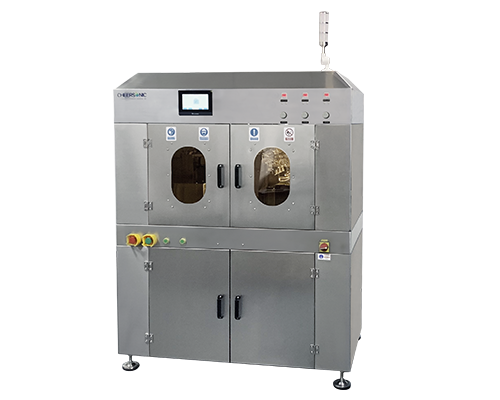Ultrasonic Spraying Heparin Technology
Ultrasonic spraying technology achieves sustained release of heparin, mainly through the following aspects:
1. Coating uniformity and thickness control
- Ultrasonic atomization effect: Ultrasonic spraying technology uses the energy generated by high-frequency sound wave vibration to atomize the heparin solution into fine particles. These fine particles can be evenly deposited on the surface of the stent or other substrate to form a uniform and dense coating. This uniformity ensures the uniform distribution of heparin in the coating, providing a basis for sustained release.
- Nanoscale coating: Ultrasonic spraying technology can control the thickness of the coating, even to the nanometer level. This precise coating thickness control helps to regulate the release rate of heparin and ensure its continuous and stable release over a certain period of time.

2. The bonding force between the coating and the substrate
- Enhanced bonding force: During the ultrasonic spraying process, the energy of the ultrasound is not only used to atomize the coating, but also may promote the interaction between the coating and the substrate, thereby enhancing the bonding force. This strong bonding force helps prevent the coating from falling off and ensures the stability of heparin during the release process.
3. Controlled release mechanism
- Physical barrier effect: The coating acts as a physical barrier to slow down the diffusion rate of heparin from the substrate surface to the surrounding environment. This physical barrier effect helps to achieve sustained release of heparin.
- Selection of coating materials: In addition to the ultrasonic spraying technology itself, the selection of coating materials also has an important impact on the sustained release of heparin. Some polymer materials can be used as coating matrices to control the release rate of heparin by adjusting their molecular structure and properties.
4. Application examples and effects
- Medical stents: In the field of medical stents, ultrasonic spraying technology has been widely used to prepare heparin-coated stents. The stent surface prepared by this technology has a uniform heparin coating, which can continuously release heparin in vivo, effectively inhibit thrombosis, and improve the biocompatibility and functionality of the stent.
- Effect verification: Experimental and clinical studies have shown that heparin-coated stents prepared by ultrasonic spraying technology have significant effects in reducing the risk of thrombosis and improving vascular patency. The verification of these effects further proves the feasibility and superiority of ultrasonic spraying technology in achieving sustained release of heparin.
In summary, ultrasonic coating technology achieves sustained release of heparin by controlling coating uniformity and thickness, the bonding strength between coating and substrate, and controlled release mechanism. This technology has broad application prospects in the medical field and is expected to make important contributions to improving treatment effects and reducing complications.
About Cheersonic
Cheersonic is the leading developer and manufacturer of ultrasonic coating systems for applying precise, thin film coatings to protect, strengthen or smooth surfaces on parts and components for the microelectronics/electronics, alternative energy, medical and industrial markets, including specialized glass applications in construction and automotive.
Our coating solutions are environmentally-friendly, efficient and highly reliable, and enable dramatic reductions in overspray, savings in raw material, water and energy usage and provide improved process repeatability, transfer efficiency, high uniformity and reduced emissions.
Chinese Website: Cheersonic Provides Professional Coating Solutions
